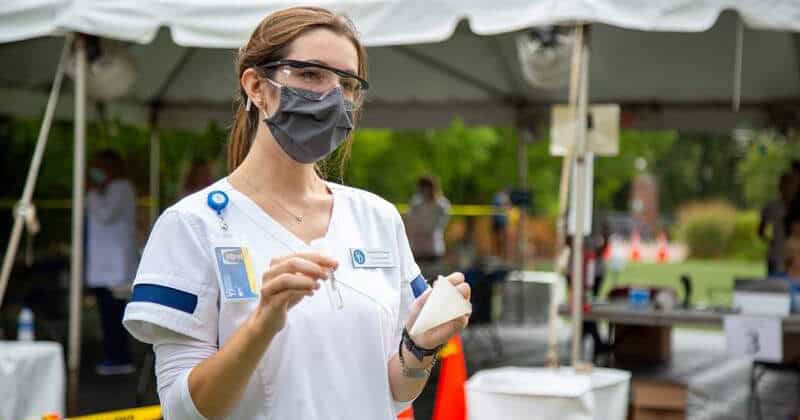RESEARCH
DISCOVERY
A Blog Devoted to UD Innovation, Excellence & Scholarship
COVID-19
Pandemic Next Steps
Coronavirus testing, such as that which occurs on UD’s campus, will be necessary for some time because variants are a normal part of viruses, and that includes the coronavirus. There are several variants currently circulating in the United States.
Nearly a year into the coronavirus pandemic, we are still wearing face masks, keeping our distance and carrying hand sanitizer. But as more Americans are getting vaccinated against COVID-19 — about 16% of the U.S. population has received at least one shot, according to the Centers for Disease Control and Prevention — there is hope that we may soon see glimpses of pre-pandemic life.
Jennifer Horney, professor and founding director of the Epidemiology program in the University of Delaware’s College of Health Sciences, shares a look at the issues surrounding COVID-19 moving forward. Horney has been featured in news articles discussing disparities in vaccine distribution, vaccine myths, priorities in getting the vaccine and potential setbacks even with the vaccine in place.
Laura Lessard, an assistant professor in the Department of Behavioral Health and Nutrition, discusses the need for additional funding and steps to repair the nation’s early child-care and education programs to ensure the health, nutrition and development of young children.
How many masks is enough?
There’s been a lot of talk lately about whether it’s better to wear two masks to reduce the risk of contracting one of the COVID variants. Masks work because they reduce the amount of particles that can be spread by the wearer while also offering the user some protection from others’ particles. The CDC suggests a well-fitted mask is most effective.
Rather than struggling to add another mask to your face, make sure the one mask you are consistently wearing is providing an adequate level of protection, Horney said. For starters, if you’ve been wearing the same fabric masks since last spring, it’s probably time to replenish your supply. Look for masks that have a metal nose piece across the bridge and adjustable ear loops for a better fit. (You can make sure your mask meets those requirements by checking out this link from the CDC.)
Sorry — even after you receive your vaccine, you will still need to mask up. Horney said we should all expect to wear a mask until experts have more overall understanding of the real-world protection the vaccine provides. For example, experts still don’t know if someone who has been vaccinated can still spread the virus to others, even if they don’t get sick themselves. The CDC has answers to many questions here.
Horney said that’s because the clinical trials for the vaccines focused only on those who developed symptoms, not whether people were infected. There is a possibility that people who have been vaccinated can still get infected but not show symptoms, which means they could spread it to others.






